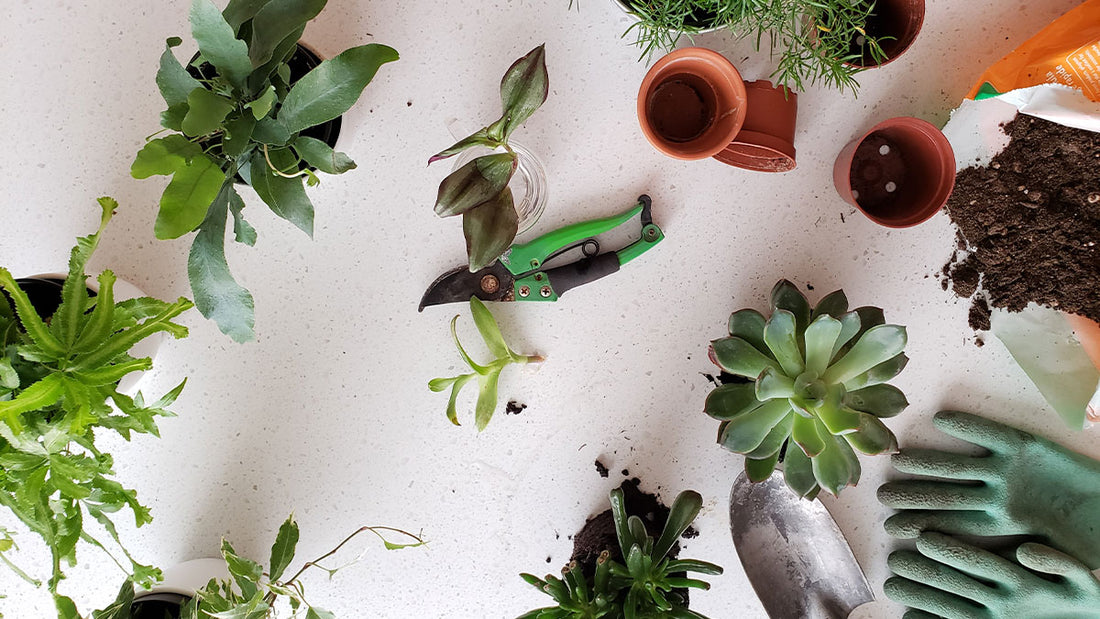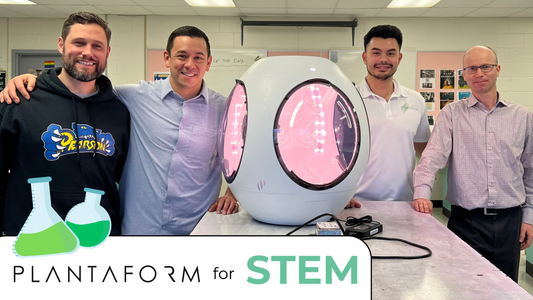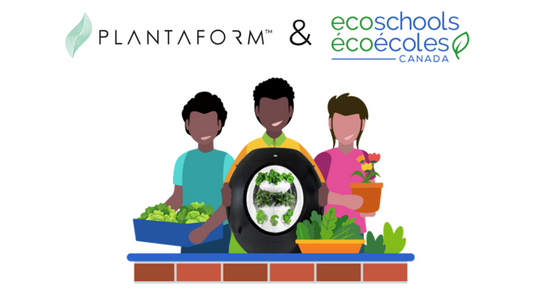The Importance of Light in Indoor Gardening

Light is a crucial factor in the growth and health of plants, playing a pivotal role in processes like photosynthesis. Ensuring the right type and amount of light in an indoor garden can be challenging, but smart indoor gardens like Rejuvenate can help alleviate these challenges by providing an optimal growing environment for your plants with adjustable lighting and wavelength options.
How Light Affects Plant Growth and Health: Beyond the Basics
Plants rely on light to carry out photosynthesis, a process by which they convert light energy into chemical energy to fuel their growth. During photosynthesis, plants absorb sunlight through pigments called chlorophyll, and this energy is then used to convert carbon dioxide and water into glucose and oxygen. The glucose produced serves as an energy source for growth, while oxygen is released into the atmosphere.
Light quality and intensity have a significant impact on the rate of photosynthesis and, consequently, the overall health and nutritional value of plants. But there's more to the story than just red and blue light. Let's dive deeper into the science of light and plant growth.

1. Photoperiodism: The Impact of Light and Dark Cycles
-
Plants respond to changes in day length, or photoperiod, which affects processes like germination, growth, and flowering.
-
Short-day plants, such as chrysanthemums and poinsettias, require long nights to initiate flowering.
-
Long-day plants, like spinach and lettuce, need short nights to trigger flowering.
-
Day-neutral plants, such as tomatoes and peppers, are unaffected by day length and flower based on age or size.
2. Photosynthetically Active Radiation (PAR): Harnessing the Right Wavelengths
-
Photosynthesis is most efficient when plants absorb light in the 400-700 nm range, known as Photosynthetically Active Radiation (PAR).
-
Blue light (400-500 nm) promotes vegetative growth, helping develop strong, sturdy stems and leaves.
-
Red light (600-700 nm) stimulates flowering and fruiting, affecting the overall yield of flowers and vegetables.
-
A combination of red and blue light creates the ideal spectrum for plant growth, ensuring they receive the necessary wavelengths for optimal development.
3. Light Intensity: Striking the Right Balance
-
Light intensity refers to the amount of light energy reaching the plant surface, measured in units called micromoles (µmol) of photons per square meter per second (µmol/m²/s).
-
Different plants have different light intensity requirements, but generally, higher light intensity increases the rate of photosynthesis, up to a saturation point.
-
Insufficient light can lead to weak, spindly plants, while too much light can cause stress, sunburn, or stunted growth.
Understanding these complex light interactions is essential for creating the ideal environment for your indoor garden. By carefully managing light cycles, wavelengths, and intensity, you can optimize the growth and health of your plants, ensuring a bountiful harvest and a thriving indoor garden.
Hidden Pitfalls of Indoor Lighting Setups
Many traditional indoor gardening setups may not provide the ideal light conditions for plant growth. In some cases, the light source might be too far from the plants, reducing the light intensity and leading to leggy, weak growth. Moreover, many standard grow lights lack the full spectrum of wavelengths needed for proper plant development. This can result in suboptimal growth, reduced yields, and even deficiencies in essential nutrients.
Navigating the Complexities of Manual Lighting
If you choose to set up an indoor garden without an automated system, managing and maintaining the lighting can be a challenging and time-consuming task. You'll need to select the right type of grow lights, taking into account factors like the light spectrum, intensity, and energy efficiency. You'll also need to ensure proper light placement, adjusting the distance between the lights and the plants as they grow. Additionally, monitoring and maintaining a consistent photoperiod (the period of light exposure) is essential, as irregular light cycles can stress plants and impact their growth.
Embracing the Future: Automated Lighting in Smart Indoor Gardens
Smart indoor gardens with automated lighting systems and app connectivity offer a superior solution for ensuring optimal light conditions for your plants. These systems provide an ideal combination of red and blue light spectrums, enabling your plants to thrive. They also adjust the light intensity and distance automatically, ensuring your plants receive the right amount of light throughout their growth stages.
To go a step further, automated systems often come with built-in timers and app connectivity, allowing you to monitor and control your indoor garden's lighting conditions remotely. This not only simplifies the process of managing it, but also ensures your plants receive consistent light exposure, minimizing stress and promoting healthy growth.

Introducing Rejuvenate: A Smart Solution with Optimized Lighting
Rejuvenate is an innovative smart indoor garden offering a hassle-free solution for managing your lighting needs when it comes to gardening inside your home. With its adjustable lighting system, Rejuvenate provides a perfect blend of red and white light spectrums, ensuring optimal growth and development for your plants.
The advanced technology integrated into Rejuvenate allows it to automatically adjust light intensity and distance, catering to the specific requirements of your plants throughout their growth stages. Furthermore, the connected app enables you to monitor and control your indoor garden's lighting conditions remotely, making it even easier to maintain a thriving and healthy garden.
The Bottom-Line
Light is a critical factor in the success of indoor gardening, affecting plant growth, health, and overall yields. While managing lighting conditions in a non-automated system can be challenging and time-consuming, smart indoor gardens like Rejuvenate offer an efficient and hassle-free solution. By providing an adjustable lighting system with optimal wavelengths and automated adjustments, Rejuvenate ensures that your plants receive the perfect amount of light for healthy growth and development.
A Little More Info on Rejuvenate
To add to this growing list of features and benefits, the app connectivity allows you to monitor and control your indoor garden's lighting conditions remotely, making it easier than ever to maintain a thriving, healthy garden.
With its advanced technology and user-friendly features, our smart garden is the ideal partner for both experienced gardeners and beginners alike, simplifying the indoor gardening experience and helping you achieve consistent success in growing a wide variety of plants. Experience the benefits of an automated lighting system and embrace the future of smart indoor gardening with Rejuvenate.





